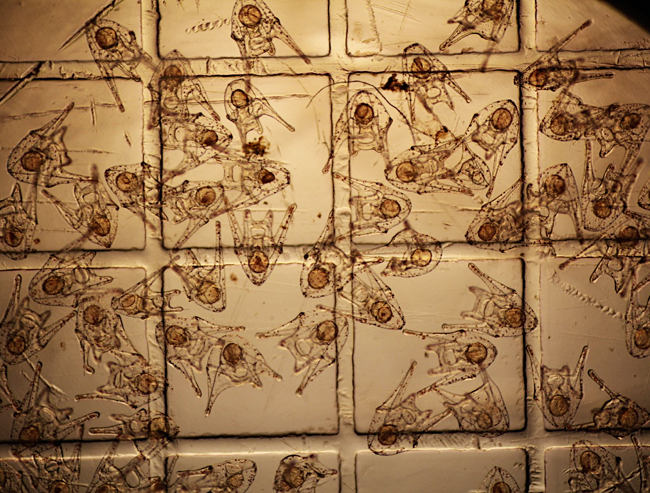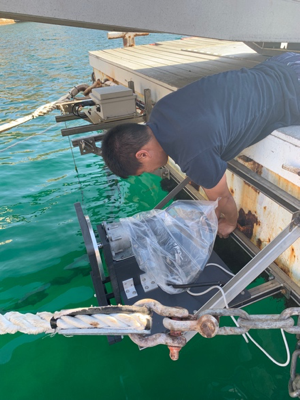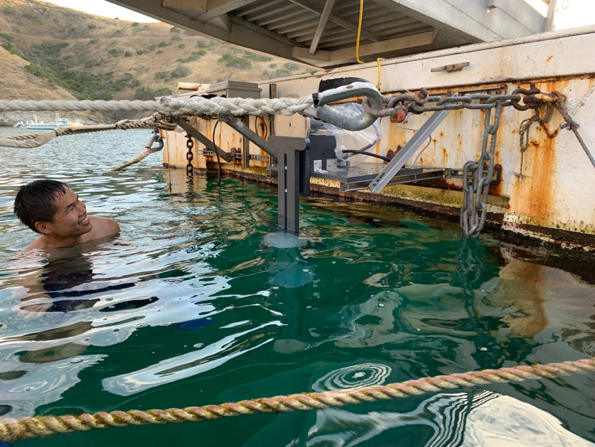By: Melissa Dellatorre
This summer I have returned for my third summer as a Wrigley fellow, studying the physiological responses to environmental change in marine invertebrate larvae, specifically oysters and sea urchins. These organisms, like most marine animals, have an early life history stage as a larva. These larvae are microscopic plankton freely swimming in the ocean. Pictured below are eight-day old white sea urchin larvae, approximately 300um body length. During this larval stage these animals are particularly vulnerable to environmental changes, and this is the stage that our lab chooses to focus our studies on.
Below is a photo of adult female white sea urchins releasing their eggs, which we fertilize to produce larvae for our experiments. An average female white sea urchin, though only a couple inches in diameter, release approximately 400,000 eggs. In the wild, only a very small percentage of these will survive into adulthood.
My work is focused on the physiological processes of invertebrate larvae under varied food qualities and quantities, and short- and long-term changes in temperature. While all of my experiments to date have been under controlled laboratory conditions, this summer we are also incorporating an approach that allows us to get a better idea of larval physiology in their natural ocean environment. The USC Machine Shop was able to build a structure for us to hold larval cultures in the ocean, with motorized vertical mixing. We have just attached to unit to the dock here at the Wrigley Marine Science Center. Pictured is graduate student, Jason Wang, tightening up the screws of the structure.
With this tool, we will now be able to help bridge the gap between laboratory and field larval development. In the upcoming weeks, I plan to perform experiments to evaluate the extent that larvae may be food limited in their natural environment, by comparing growth and physiological processes to a wide range of food quantities held at constant ration in the laboratory. The in-situ vessel has the advantage of exposure to natural variations in light, temperature, salinity, and algal concentrations in the ocean, unlike laboratory experiments, yet also allow for control and replication in experimental design, unlike field research studies. We hope to gain insight on the longstanding debate in larval biology as to whether planktotrophic larvae are food limited in the ocean, and the potential consequences of food availability on larval survival through metamorphosis in the ocean.
The Wrigley Marine Science Center is a prime location for this experiment, as it allows for the in situ larval cultures to be deployed in close proximity to a laboratory, in order to perform physiological assays using larvae reared in the natural ocean environment. Additionally, the pristine ocean conditions here in Fisherman’s cove support larval growth and development. I am very thankful for the Wrigley Fellowship and all of the Wrigley Institute staff that is always very helpful and supportive of our work.





